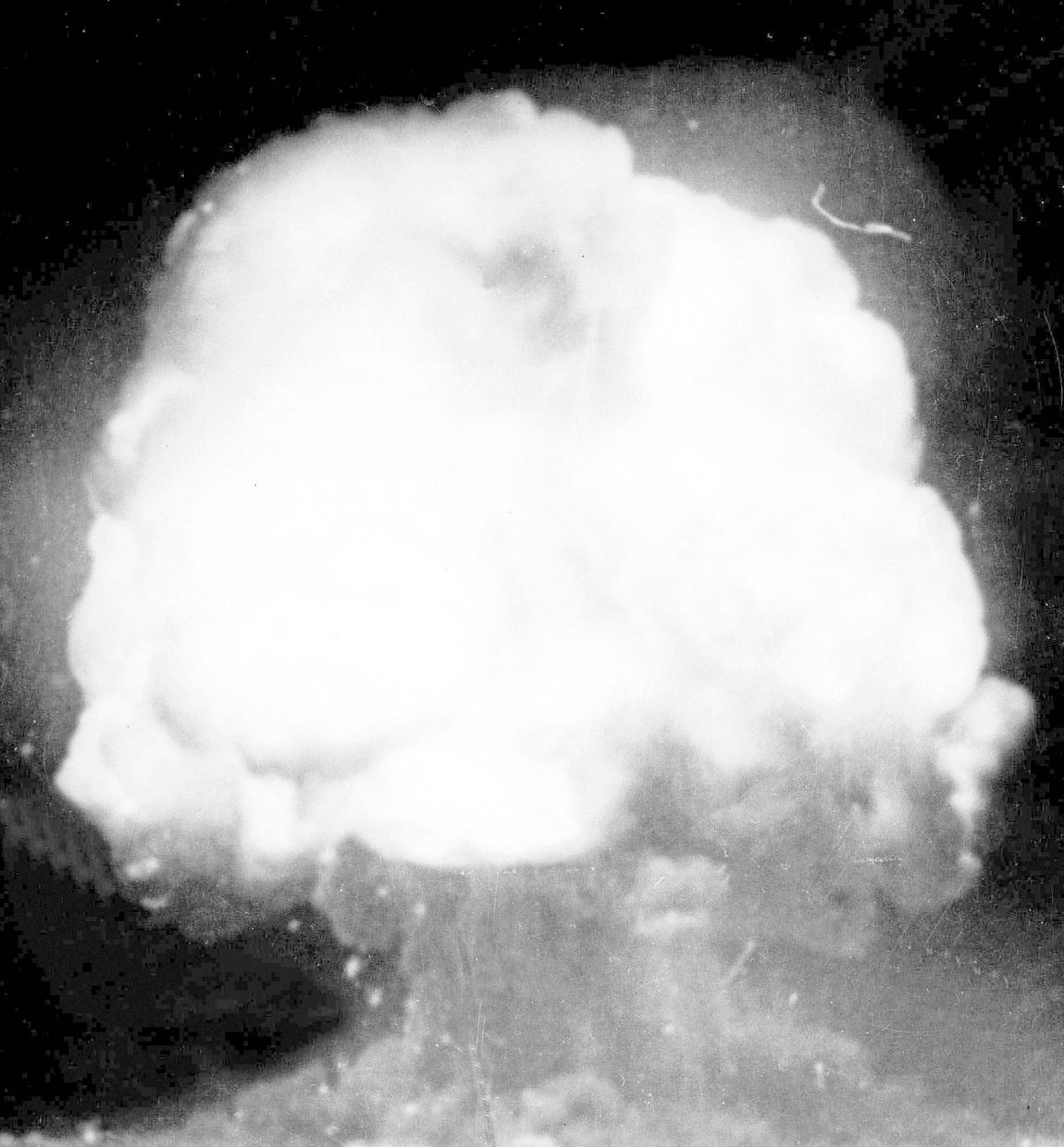J. Robert Oppenheimer
THE movie about a man who changed the course of the world’s history by shepherding the development of the first atomic bomb is a blockbuster, dramatic and full of suspense.
On the sidelines will be a community downwind from the testing site in the southern New Mexico desert, the impacts of which the US government never has fully acknowledged. The movie on the life of scientist J. Robert Oppenheimer and the top-secret work of the Manhattan Project sheds no light on those residents’ pain.
“They’ll never reflect on the fact that New Mexicans gave their lives. They did the dirtiest of jobs. They invaded our lives and our lands and then they left,” Tina Cordova, a cancer survivor and founder of a group of New Mexico downwinders, said of the scientists and military officials who established a secret city in Los Alamos during the 1940s and tested their work at the Trinity Site some 322km away.
Cordova’s group, the Tularosa Basin Downwinders Consortium, has been working with the Union of Concerned Scientists and others for years to bring attention to what the Manhattan Project did to people in New Mexico.
While film critics celebrate Oppenheimer and officials in Los Alamos prepare for the spotlight to be on their town, downwinders remain frustrated with the US government – and now movie producers – for not recognising their plight.
Advocates held vigils on July 15 on the 78th anniversary of the Trinity Test in New Mexico and in New York City, where director Christopher Nolan and others took part in a panel discussion following a special screening of the film.
Nolan has called the Trinity Test an extraordinary moment in human history.
“I wanted to take the audience into that room and be there for when that button is pushed and really fully bring the audience to this moment in time,” he said in a clip being used by Universal Studios to promote the film.
The movie is based on Kai Bird and Martin Sherwin’s Pulitzer Prize-winning American Prometheus: The Triumph and Tragedy of J. Robert Oppenheimer. Nolan has said Oppenheimer’s story is both a dream and a nightmare.
Lilly Adams, a senior outreach coordinator with the Union of Concerned Scientists, participated in the New York City vigil and said it was meant to show support for New Mexicans who have been affected.
“The human cost of Oppenheimer’s Trinity Test, and all nuclear weapons activities, is a crucial part of the conversation around US nuclear legacy,” she said.
“We have to reckon with this human cost to fully understand Oppenheimer’s legacy and the harm caused by nuclear weapons.”
In developing and testing nuclear weapons, Adams said the US government effectively “poisoned its own people, many of whom are still waiting for recognition and justice”.
Adams and others have said they hope that those involved in making Oppenheimer help raise awareness about the downwinders, who have not been added to the list of those covered by the federal government’s compensation programme for people exposed to radiation.
Government officials chose the Trinity Test Site because it was remote, flat and had predictable winds. Due to the secret nature of the project, residents in surrounding areas were not warned.
The Tularosa Basin was home to a rural population that lived off the land by raising livestock and tending to gardens and farms. They drew water from cisterns and holding ponds. They had no idea that the fine ash that settled on everything in the days following the explosion was from the world’s first atomic blast.
The government initially tried to hide it, saying that an explosion at a munitions dump caused the rumble and bright light, which could be seen more than 250km away.
It wasn’t until the US dropped bombs on Japan weeks later that New Mexico residents realised what they had witnessed.
According to the Manhattan Project National Historical Park, large amounts of radiation shot up into the atmosphere and fallout descended over an area about 400km long and 320km wide.
Scientists tracked part of the fallout pattern as far as the Atlantic Ocean, but the greatest concentration settled about 50km from the test site.
For Cordova and younger generations who are dealing with cancer, the lack of acknowledgement by the government and those involved with the film is inexcusable. “We were left here to live with the consequences,” Cordova said. “And they’ll over-glorify the science and the scientists and make no mention of us. And you know what? Shame on them.”
In Los Alamos, more than 320km north of the Tularosa Basin, reaction to the film has been much different. The legacy of Oppenheimer and the Manhattan Project means Los Alamos is home to one of the nation’s premier national laboratories and has the highest percentage of people with doctorate degrees in the US.
Oppenheimer Drive cuts through the heart of Los Alamos, Hoppenheimer IPA is on tap at a local brewery and the physicist is the focus of an exhibit at the science museum, where some of his handwritten notes and ID card are displayed.
The city hosted an Oppenheimer Festival that ran throughout July.
About 200 extras used in the film were locals, many of them Los Alamos National Laboratory employees.
During breaks, conversations among the extras centred on science and world problems, said Kelly Stewart, who works with Los Alamos County’s economic development division.
There’s a pride that’s woven into the town’s DNA, Stewart said, and it revolves around the lab’s work to address national security and global concerns.
The goal is to position Los Alamos as a place where people can begin to learn “the true stories” behind the events depicted in the film, Stewart said.
The county’s “Project Oppenheimer” effort has included forums, documentaries, art installations and exhibits to educate visitors about the science happening at the lab as well as the social implications of the Manhattan Project. — AP







